#time to visit tanzania
Text
Tanzania Family Holiday - Get the Best Family Safari Holidays in Africa

Exploring Tanzania's vibrant landscapes and diverse wildlife with loved ones is a cherished dream for many. A Tanzania Family Holiday lets you live this dream, offering the perfect setting to introduce the majestic Tanzanian wildlife to your family, creating memories to last a lifetime. With our Tanzania Safari Tours, you will witness nature's wonders and get a chance to engage with local tribes and experience authentic Tanzanian culture.
Tanzania Family Safari Trip Highlights
Tanzania is a playground for wildlife enthusiasts and nature lovers. Here are some highlights to anticipate on your Tanzania Family Holiday:
Experience the vastness and beauty of the Serengeti National Park, home to the iconic wildebeest migration.
Dive into the depths of Ngorongoro Crater, the world's largest intact volcanic caldera, teeming with wildlife.
Witness majestic elephants at Tarangire National Park.
Witness the unique spectacle of tree-climbing lions at Lake Manyara National Park.
Relax with your loved ones, surrounded by Zanzibar's pristine beaches and turquoise waters.
Where To Go on A Tanzania Family Safari Holiday?




While there are countless Tanzania Safari Destinations, some stand out for family trips:
Serengeti National Park
Marvel at the sheer number of animals, including the famous wildebeest migration, lions, zebras, and more.
Tarangire National Park
The place is renowned for its large elephant population and iconic baobab trees.
Ngorongoro Crater
This natural wonder is home to over 25,000 animal species. With its high concentration of wildlife, spotting your favorite animals is a breeze.
Lake Manyara National Park
It’s a hidden gem known for its tree-climbing lions and vast flocks of flamingos.
Zanzibar
After the excitement of the safari, relax on Zanzibar's white sandy beaches, enjoying the Indian Ocean's clear blue waters.
How Much Does a Tanzania Family Safari Cost?
Tanzania Safari Costs might vary depending on accommodation types and group sizes. For instance, a family of 4 to 6 members might start at $855, while 2 to 3 members could start at $1,500. Typical inclusions in Tanzania Family Safari Packages:
Airport transfers in a private vehicle
Transport and wildlife drives in modified 4WD vehicles with special features
Professional English-speaking safari guide services
All wildlife reserve entry fees
Game drives in various national parks
Domestic flight transfers, like from Serengeti to Zanzibar
Zanzibar Accommodation
When To Go on A Tanzania Family Holiday?
Tanzania boasts a relatively mild climate, making it an excellent year-round destination. However, for an optimal safari experience, consider visiting between January to March or June to October. The dry months from July to October are particularly recommended for family holidays.
Tanzania Family Safari Activities
From game drives to cultural experiences, Tanzania has it all:
Engage in thrilling game drives across various Tanzania Safari Destinations.
Observe nearby wildlife, including lions, elephants, cheetahs, and rhinos.
Enjoy cultural interactions with local tribes.
Relish the serene beaches of Zanzibar with activities like snorkelling, kite-surfing, and dhow sailing.
Tanzania Family Safari Accommodations
Our Tanzania Safari Packages offer a range of accommodations to cater to different preferences:
Luxury lodges with modern amenities.
Tented camps for an authentic safari feel.
Basic camping for adventurous souls.
Comfortable accommodations in both Moshi/Arusha and Zanzibar.
Our Tanzania Family Safari Itinerary
Our safari packages are designed with families in mind and offer unforgettable experiences, from wildlife encounters to beach relaxation. Here is a short glimpse of the itinerary for our Tanzania Family Safari Packages:
Arrival at Kilimanjaro International Airport and transfer to Moshi/Arusha.
Explore Tarangire National Park, home to large elephant populations.
Discover Lake Manyara National Park and Ngorongoro Conservation Area.
Experience the vastness of the Ngorongoro Crater.
Traverse the iconic Serengeti National Park with its plethora of wildlife.
Soak in the beauty and culture of Zanzibar for four days.
Departure from Zanzibar International Airport.
Start Planning Your Family Safari Trip in Tanzania
With a myriad of experiences awaiting, a Tanzania Family Holiday promises exciting adventures and cherished moments with loved ones. Start planning to create memories that will be treasured for years. Our carefully crafted tours assure you of a holistic Tanzania Family Vacation experience.
0 notes
Text
Family safari packages » are intended to give extraordinary encounters to all ages. These agendas consolidate untamed life seeing with instructive exercises, guaranteeing that each relative can partake in the experience.
0 notes
Text
Explore The Best Time to Visit Tanzania With Our Travel Experts

Planning a trip to Tanzania? And wondering what time of the year is the Best Time to Visit Tanzania? Tanzania is great to visit almost any time of the year.
But when is the Best Time of The Year to Visit Tanzania? Well, the answer depends on your interests and the experiences you seek. In this post, we’ll break it down month by month to help you plan the perfect Safari In Tanzania.
Tanzania is an all-year destination. However, from June to October (the dry season) is usually the best time to visit. This is because the foliage is less thick and it is easier to spot wildlife. The Great Wildebeest Migration is in Tanzania (Serengeti) for 8 months of the year, and usually, the best time to see it is in June – July. If you wish to see the calving season, January to early March is the best time to visit (Ndutu area).
Month By Month Guide To Travelling In Tanzania
June to October – Dry Season: These are the Best Month For Tanzania Safari to see the wildebeest migration
August to September is the best time to see the wildebeest river crossings in northern Serengeti. Animals are easier to spot since they concentrate around waterholes and rivers
January-February is the time to see the calving in the southern Serengeti, and an excellent time to see predator action
March to May is the peak of the Wet season. Wildlife viewing in Tarangire, Katavi, Selous, and Ruaha is better during the Dry season
Now that you know When the Best Time to Visit Tanzania is, it’s time to plan your dream safari or cultural adventure. If you’re passionate about preserving this stunning natural beauty for future generations and want to make a positive impact on the environment and local communities, consider booking your trip with Sumbi Extra Miles Safari.
So start planning your amazing Tanzania Safari Vacations with today! We provide the best customized and tailored packages and Tanzania Travel Guide which suits your needs and interests to make your trip successful.
#Best Time of The Year to Visit Tanzania#Safari In Tanzania#Best Time to Visit Tanzania#Tanzania Safari Vacations
0 notes
Text
Exploring Tanzania's Wildlife Paradise During the Kenya Migration Season
Every year, Tanzania's vast plains become the stage for one of nature's most dramatic events: the Kenya Migration Season. This awe-inspiring spectacle sees millions of wildebeest, zebras, and other wildlife traverse the Serengeti in search of greener pastures, making it a prime time to witness the raw beauty of Africa's wildlife. Join us on a journey through Tanzania's wildlife paradise during this remarkable season.
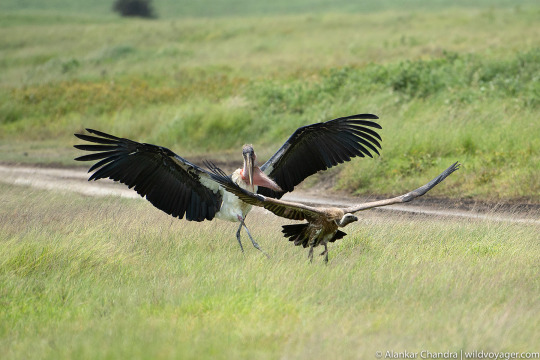
1. The Great Migration:
The Kenya Migration Season is a phenomenon like no other, as over two million wildebeest, zebras, and gazelles move in a circular pattern between Tanzania's Serengeti and Kenya's Maasai Mara. Witnessing this mass movement of animals is a once-in-a-lifetime experience that showcases the true power of nature.
2. Prime Wildlife Viewing:
During the Kenya Migration Season, Tanzania's national parks and reserves, especially the Serengeti, offer unparalleled opportunities for wildlife viewing. The herds attract predators such as lions, leopards, and cheetahs, providing visitors with the chance to witness thrilling predator-prey interactions.
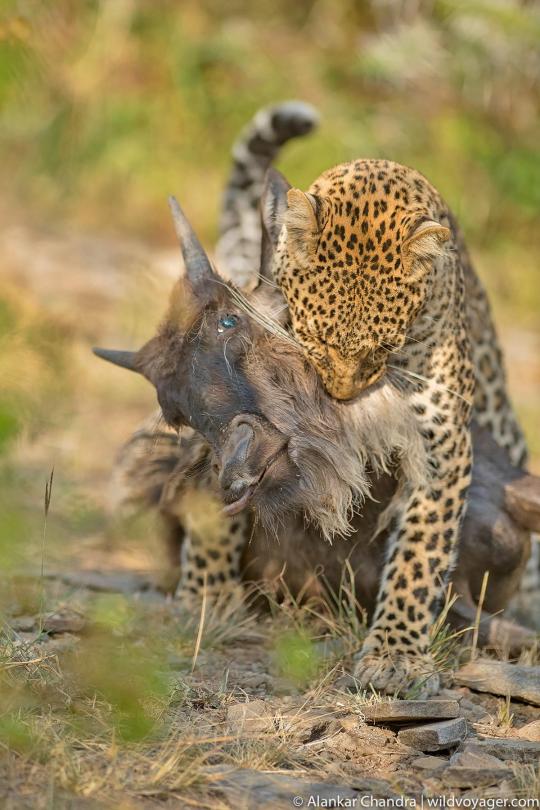
3. Bird-Watching Paradise:
A part of the iconic mammals, Tanzania's Kenya Migration Season is also a paradise for bird watchers. The wetlands and grasslands teem with a variety of bird species, making it a haven for bird enthusiasts looking to spot rare and colorful species.
4. Serengeti Hot Air Balloon Safaris:
One of the best ways to experience the Kenya Migration Season is from the sky. Hot air balloon safaris over the Serengeti offer a bird's-eye view of the vast herds below, as well as panoramic vistas of the savannah and its inhabitants.
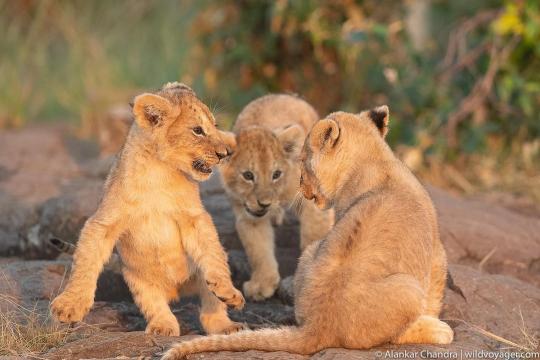
5. Cultural Experiences:
Tanzania's wildlife is not the only attraction during the Kenya Migration Season. Visitors can also immerse themselves in the rich Maasai culture by visiting local villages and participating in traditional ceremonies, providing a deeper understanding of the region's heritage.
Contact To Wild Voyager (Best Trip Planner)
6. Sustainable Tourism Practices:
As the Kenya Migration Season attracts a large number of tourists, it is crucial to practice sustainable tourism to protect the fragile ecosystem. Responsible tour operators ensure that visitors leave only footprints and contribute to the conservation of Tanzania's wildlife.
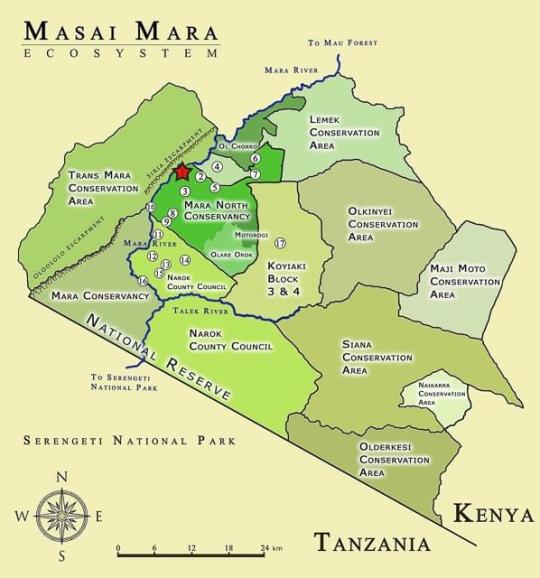
7. Accommodation Options:
Tanzania offers a range of accommodation options, from luxury lodges to tented camps, ensuring that visitors can experience the Kenya Migration Season in comfort and style. Many lodges and camps are located within or near national parks, providing easy access to wildlife.
8. Conservation Efforts:
Tanzania has made significant efforts to conserve its wildlife and habitats, particularly during the Kenya Migration Season. Conservation initiatives, such as anti-poaching patrols and community-based conservation projects, play a crucial role in preserving the natural environment for future generations to enjoy.

9. Photography Opportunities:
The Kenya Migration Season is a paradise for photographers, offering stunning landscapes and close-up shots of wildlife. Whether you're a professional photographer or a novice, Tanzania's wildlife paradise provides endless opportunities to capture breathtaking moments.
10. Off-the-Beaten-Path Adventures:
While the Kenya Migration Season attracts a large number of tourists, there are still plenty of opportunities to explore off-the-beaten-path areas. Guided walking safaris and night drives offer a different perspective of Tanzania's wildlife, away from the crowds.
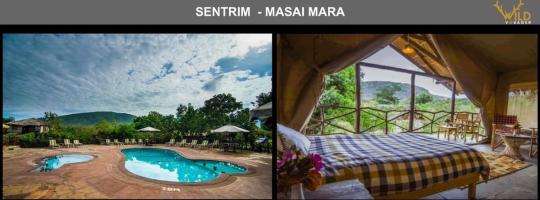
11. Climate and Weather:
The Kenya Migration Season in Tanzania Experience occurs during the dry season, from June to October when the weather is cooler and drier. This makes it an ideal time to visit, as wildlife congregates around water sources, making them easier to spot.
12. Planning Your Visit:
To make the most of your Kenya Migration Season experience in Tanzania, it's essential to plan. Book your accommodation and safari tours well in advance, as this is a popular time to visit. Consider combining your safari with other activities, such as hot air balloon safaris or cultural tours, to enhance your experience.
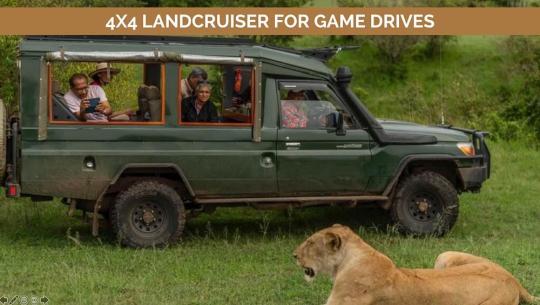
13. The Magic of Tanzania's Wildlife Paradise:
The Kenya Migration Season in Tanzania is a magical time when the plains come alive with the sights and sounds of millions of animals on the move. Whether you're a wildlife enthusiast, a nature lover, or simply seeking adventure, Tanzania's wildlife paradise offers something truly special during this remarkable season.
Conclusion :
Exploring Tanzania's wildlife paradise during the Kenya Migration Season is an experience like no other. From witnessing the Great Migration to immersing yourself in Maasai culture, Tanzania offers a wealth of experiences that will leave you in awe of the natural world. So pack your bags, grab your camera, and get ready for the adventure of a lifetime in Tanzania's wildlife paradise.

The Kenya Migration Season in Tanzania is a testament to the beauty and diversity of Africa's wildlife. By exploring Tanzania's wildlife paradise during this remarkable season, visitors can witness nature at its most raw and untamed, creating memories that will last a lifetime.
Read More - Best Time to Visit Masai Mara
0 notes
Text
Choosing the Perfect Time: Best Seasons to Experience Tanzania with Rena Tours
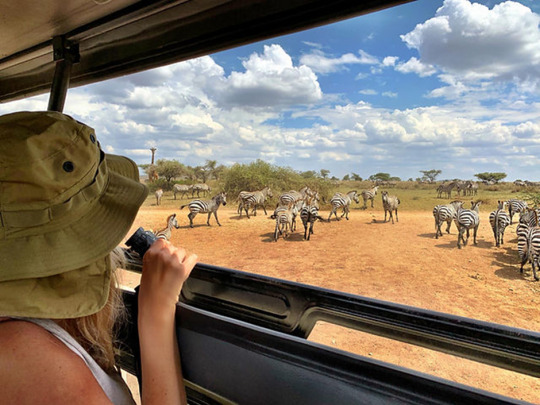
The Best Time to Visit Tanzania depends largely on the type of activities you're interested in, as the country's diverse landscapes and climates offer unique experiences throughout the year.
For wildlife enthusiasts, the optimal time to visit is during the dry season, from late June to October. This period coincides with the Great Migration in the Serengeti, where millions of wildebeest, zebras, and other animals move in a spectacular mass across the plains. The dry season is also ideal for visiting the Ngorongoro Crater and other national parks, as animals gather around water sources, making them easier to spot. The weather is generally sunny and warm, with cooler nights, especially in higher altitudes.
If you’re planning to Climb Mount Kilimanjaro, the best times are during the dry seasons, either from late June to October or from January to early March. These months provide more stable weather conditions, making the ascent safer and more enjoyable.
Beach lovers should consider visiting Tanzania from December to March, when the weather is hot and humid, perfect for enjoying the beautiful beaches of Zanzibar and the mainland coast. This period is also excellent for diving and snorkeling, as the waters are clear and calm.
For bird watchers, the wet season from November to May is ideal. This period sees the arrival of migratory birds and lush landscapes, although it’s worth noting that some remote areas may be less accessible due to rainfall.
While Tanzania Safari Tours offers year-round attractions, the best times to visit for wildlife viewing are during the dry seasons, beach holidays are ideal from December to March, and bird watching is best during the rainy season. Rena Tours specializes in crafting personalized itineraries to maximize your experience based on these optimal times, ensuring you get the most out of your visit to Tanzania.
0 notes
Text
Planning Your Safari: The Best Times to Explore Masai Mara
Embark on the ultimate African adventure by planning your safari to Masai Mara at the perfect time. Discover the best times to explore this iconic destination, known for its stunning wildlife and breathtaking landscapes. Whether you're a wildlife enthusiast or a nature lover, Masai Mara offers an unforgettable experience year-round. The best times to visit Masai Mara are during the Great Migration, typically from July to October, when millions of wildebeest, zebras, and other animals cross the Mara River in search of greener pastures. This spectacle is a must-see for any safari-goer.
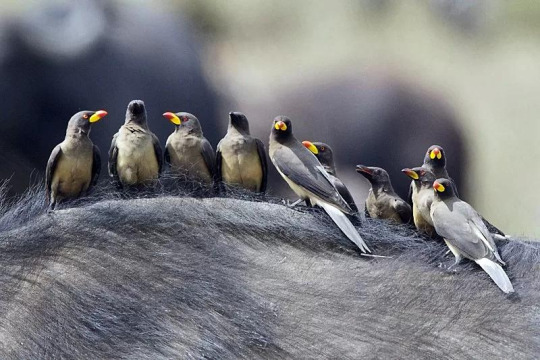
1 note
·
View note
Text
April in Tanzania: Unveiling Nature's Splendor on Safari

April in Tanzania, Tanzania transforms into a safari paradise as the short rains subside, giving rise to lush greenery that blankets the landscapes. It's a time of unparalleled beauty and wildlife spectacle, especially in the iconic Serengeti, where the Great Migration's river crossings unfold. Thousands of wildebeests and zebras brave crocodile-infested waters in a dramatic display of nature's raw power.
April is a unique time for birdwatchers, with many migratory birds making Tanzania their temporary home. With comfortable temperatures and expanding vegetation, a Safari in Tanzania in April offers an optimal setting for immersion into the country's natural grandness. Exploring the Serengeti and Ngorongoro Crater on Safari Vacations In Tanzania is a dream come true for wildlife enthusiasts.
Venturing beyond the Serengeti unveils the rugged beauty of Tanzania's southern circuit national parks. Katavi boasts vast buffalo herds and remote wilderness, ideal for those seeking a rugged adventure. Meanwhile, Ruaha's diverse ecosystems and remarkable wildlife encounters captivate explorers with its untamed landscapes.
April beckons adventurers with a promise of exploration and discovery, making it a strong contender for the Best Time to Visit Tanzania. Whether witnessing awe-inspiring wildlife events or delving into remote wilderness, April invites visitors to experience Tanzania's natural wonders in all their glory. Conservation Caravan Safaris offer an opportunity to engage in responsible tourism practices while enjoying the breathtaking landscapes and wildlife of Tanzania.
#April in Tanzania#Safari in Tanzania in April#Safari Vacations In Tanzania#Best Time to Visit Tanzania
0 notes
Text
Which Is The Best Time To Visit Tanzania For A Safari Adventure?

Exploring on a safari adventure in Tanzania is a dream for many wildlife enthusiasts, and timing is key to ensuring a truly mesmerizing experience. The East African country boasts a diverse range of landscapes and ecosystems, making it crucial to pick the right season for your safari. Let's explore the Best Time To Visit Tanzania for an unforgettable safari adventure.
1. Dry Season (June to October):
The dry season is widely as the Best Time For Safari In Tanzania. Running from June to October, this period offers clear skies, low humidity, and sparse vegetation, making it easier to spot wildlife. The animals tend to gather around water sources, providing excellent opportunities for game viewing. The famous Serengeti National Park hosts the Great Migration during this season, where millions of wildebeest and other herbivores move in search of greener pastures, attracting predators in tow.
2. Shoulder Seasons (November and May):
The months of November and May mark the transitional periods between the wet and dry seasons. While there may be occasional rain, the landscapes are lush and green, and the crowds are thinner compared to the peak season. This can be an ideal time for budget-conscious travelers who want to avoid the high tourist volume. Wildlife is still abundant, and the scenery is stunning, making it a great compromise between the wet and dry seasons.
3. Wet Season (March to May):
The wet season, also known as the "green season," occurs from March to May. While the rainfall can make some roads impassable and lead to temporary closures of certain areas, it's a magical time for bird enthusiasts and photographers. The vegetation is at its most vibrant, and many animals give birth during this period. Some lodges offer discounted rates, making it an attractive option for those seeking a more budget-friendly safari.
The Great Migration Show:
If witnessing one of the greatest natural spectacles on Earth is on your bucket list, plan your visit between June and September. This is when the Great Wildebeest Migration occurs in the Serengeti National Park, as millions of wildebeest and other animals cross the plains in search of fresh grazing land. The dramatic river crossings are a sight to behold and offer unparalleled opportunities for wildlife enthusiasts and photographers.
The Tanzania Safari Tours offerings are a year-round spectacle, each season unveiling different facets of its natural beauty. Join with Galago Expeditions and Plan your safari carefully with choosing the Best Time To Visit Tanzania for a safari adventure depends on your preferences and priorities., taking into account the unique features of each season, and get ready to explore on a journey filled with breathtaking wildlife encounters and unforgettable moments in the heart of East Africa.
0 notes
Text
The Best Time to Embark on an Unforgettable Tanzanian Adventure
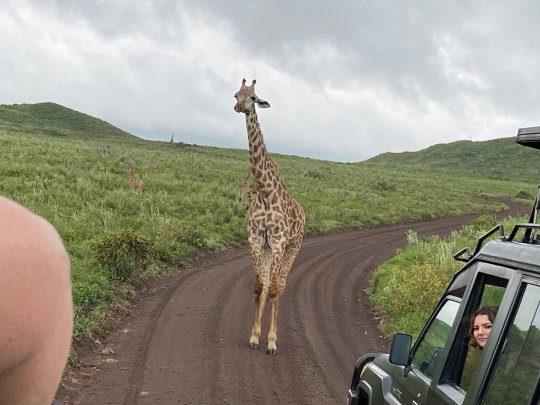
Tanzania, a land of diverse landscapes and abundant wildlife, offers a magical experience for travellers seeking a memorable African adventure. Choosing the Best Time To Visit Tanzania is crucial to ensure you witness its natural wonders at their finest. In this guide, we'll explore the different seasons in Tanzania and help you discover the Best Time Of Year To Safari In Tanzania to plan your safari or climb the majestic Mount Kilimanjaro.
1. Dry Season (May to October)
The dry season is considered the best time to visit Tanzania, offering favorable conditions for wildlife safaris and outdoor activities. From May to October, the weather is generally dry and cool, providing comfortable temperatures during the day and chilly nights. This season marks the Great Migration in Serengeti, as millions of wildebeest, zebras, and other herbivores move in search of water and fresh grazing lands, attracting predators in their wake. Witnessing this incredible spectacle is a once-in-a-lifetime experience.
The dry season also presents an excellent time for mountain climbing, particularly for ascending Mount Kilimanjaro. The clear skies offer breathtaking views, and the dry trails make the trek safer and more manageable. It's essential to book accommodations and tours well in advance, as this period attracts a considerable number of tourists.
2. Wet Season (November to April)
The wet season in Tanzania, from November to April, is characterized by occasional heavy rains. While this season might not be the ideal time for safari adventures, it brings its own unique charm to the country. The landscapes transform into lush greenery, and many animals give birth during this time, leading to an abundance of young wildlife.
In the southern and western parts of Tanzania, such as the Selous Game Reserve and Katavi National Park, the wet season offers fantastic opportunities for birdwatching, as migratory birds arrive in large numbers. Additionally, this period sees fewer tourists, providing a more exclusive and tranquil experience.
However, it's essential to note that some roads might become impassable due to flooding, and certain remote areas might be inaccessible during heavy rains. Despite this, the wet season can still be a rewarding time to visit Tanzania if you're interested in birdlife and can tolerate occasional showers.
3. Shoulder Seasons (April to May and November)
The transitional months of April to May and November are considered the shoulder seasons, marking the periods between the wet and dry seasons. During these months, tourism is at its lowest, and accommodations often offer discounted rates. While there is a higher chance of rainfall during these periods, it can vary from year to year. Travellers who prefer quieter experiences and are willing to take a bit of a risk with the weather might find these months suitable for your best Tanzania Experience.
Conclusion
Choosing the Best Time To Visit Tanzania largely depends on your preferences and interests. If you seek the thrill of witnessing the Great Migration and exploring Tanzania's wildlife in its natural habitats, the dry season is ideal. On the other hand, the wet season offers its own unique rewards for travellers seeking a more exclusive experience. Whether you're a wildlife enthusiast or an adventurer set to conquer Mount Kilimanjaro, Tanzania Safari Holidays promises an unforgettable journey in every season.
#Best Time To Visit Tanzania#Tanzania Safari Holidays#Tanzania Experience#Best Time Of Year To Safari In Tanzania
1 note
·
View note
Text
Astro obs part 9
🐌 The planets in your 12th house indicate your sleeping style:
Sun in 12th house - their sleep schedule is extremely messed up; for them, daylight hours = nighttime hours and vice versa, so they have trouble being themselves during the day; their true self comes out at night
Moon in 12th house - goes to sleep very late; full moons have a special effect on these people; their intuition is more clear at night; as kids, they probably slept a lot with their mother
Mercury in 12th house - loves texting/calling people late at night; they might journal their thoughts before sleep because they overthink a lot and it helps to clear their mind or maybe they just like to relax by reading a book at night
Venus in 12th house - cares a lot about getting their "beauty sleep"; sleeps with sleep masks on, buys expensive bed lingerie, skincare night routine might be very important; loves sleeping in general lmao
Mars in 12th house - enjoys working out before going to sleep, can go to sleep angry because they tend to get into conflict more at night than during the day
I have Uranus in 12th house and i can be both a light sleeper or a heavy sleeper, depending on where i am. For example, when i'm traveling, during the first night i wake up several times, but from the second night on i sleep like a baby lmao. Another thing would be that i can't sleep in a quiet car but i don't have any problem sleeping during a thunderstorm
🐌 Mars in fire signs (Aries, Leo, Sag) and Mars in 3rd house individuals love riding motorbikess
🐌 While Mars in 9th house peeps would probably love to go on a world tour on their motorbike. The sign ruling their 9th house represents the countries they would love to visit (i'm aware that some of these can only be visited by plane, take it with a grain of salt):
♈ in 9th house: Ireland, Poland, Japan, Zimbabwe
♉ in 9th house: Cuba, Paraguay, South Africa, East Timor
♊ in 9th house: Denmark, Norway, Sweden, Iceland, Montenegro
♋ in 9th house: Canada, USA, Bahamas, Argentina, Slovenia, Madagascar
♌ in 9th house: Hawaii, France, Italy, The Netherlands, India, South Korea, Peru, Bolivia
♍ in 9th house: Switzerland, Mexico, Brazil, Chile, Vietnam
♎ in 9th house: Belgium, Portugal, China, Equatorial Guinea, Lesotho
♏ in 9th house: Panama, Spain, Turkey, Arab countries (Saudi Arabia, UAE), Palestine, Lebanon
♐ in 9th house: Finland, Lithuania, Romania, Tanzania, Thailand
♑ in 9th house: UK, Germany, Czech Republic, Australia, Camerun
♒ in 9th house: Greece, New Zealand, Philippines, Singapore, Sri Lanka
♓ in 9th house: Morocco, Tunisia, Egypt, Mauritius, Saint Lucia

🐌 I have a feeling Pisces Suns like to spend their time in a garage lmao. Mostly because their opposing sign, Virgo, would hate to spend time in a garage due to how dirty it can get.
🐌As a 7th house Sun who's been in love for almost a year now (haha, are we surprised, ofcours not; i'm not even in a relationship with him but ugh we're so perfect for each other), i realised that Sun in 7th house people tend to behave differently with their partner when they're in a healthy relationship vs when they're in a toxic one
Sun in 7th house in:
♈ Aries in a healthy relationship: empowers their partner, knows how to balance me time vs us time in a healthy manner, encourages their partner to take safe risks
♈ Aries in an unhealthy relationship: impulsive, impatient, selfish, dismisses their partner's feelings, often controlled by rage, prone to abusing their partner
♉ Taurus in a healthy relationship: veryyy generous (their love language is gift giving), accommodating to their partner's wants and needs, cooks for their partner
♉ Taurus in an unhealthy relationship: stubborn af, hard to please, focused more on the material gain from their partner rather than the love they share
♊ Gemini in a healthy relationship: curious, always lightens the mood of their partner by cracking up tons of jokes or telling them funny stories, knows that communication is key to everything so they're not afraid to discuss serious topics, teaches their partner a lot of random stuff
♊ Gemini in an unhealthy relationship: superficial, doesn't have a problem moving on from their partner to another person in a matter of seconds, if they're still in school/college, then they prioritize studying over their partner
♋ Cancer in a healthy relationship: nurturing, knows how to balance babying their partner vs being babied by their partner, emotionally vulnerable, feels safe enough to present their partner to their family early on in the relationship
♋ Cancer in a unhealthy relationship: if they don't trust their partner, they tend to become emotionally closed off to hide their deep sadness; defensive, but if their partner attackes them, then they'll hide, worries excessively, avoids presenting their partner to their family
♌ Leo in a healthy relationship: treats their partner like the king/queen they are, keeps their ego in check so it doesn't interfere with the relationship, if they've got artistic talents (music, acting, art etc.), they'll show their love for their partner by performing in front of them
♌ Leo in an unhealthy relationship: egocentric, shows off their partner/relationship too much out of pride, often feels entitled in the relationship and wants to be put on a pedestal by their partner
♍ Virgo in a healthy relationship: selfless to a healthy degree, remembers every lil detail from every casual conversations with their partner just to please them, remembers every important date and plans ahead for it, takes care of their partner when they're sick
♍ Virgo in a unhealthy relationship: critical, overfixates on past hurts and mistakes that their partner made in the relationship (often times their partner doesn't even remember those things because they're usually not that serious), loves their pets more than their partner
♎ Libra in a healthy relationship: romantic, charismatic, truly values their partner and the relationship with them, acts fair in the relationship, teaches their partner lovingly about the importance of honesty, truth and a healthy give and take dynamic in a relationship
♎ Libra in an unhealthy relationship: doesn't prioritize the relationship; instead, they flirt with others despite being in a relationship, emotionally detached, cold and calculated in their current relationship
♏ Scorpio in a healthy relationship: loyal, loves their partner deeply and intensely, but without suffocating them, keeps their partner's secrets like they're a locked safe box with no public access
♏ Scorpio in an unhealthy relationship: obsessive, manipulative, seeks to dominate their partner, displays stalkish behaviour in the relationship, liar
♐ Sagittarius in a healthy relationship: exposes their partner to various cultures, belief systems and philosophies to expand their mind and form their own opinion on certain topics, loves freely but is still able to maintain a long-term relationship, improves their partner's mood, usually brings an element of surprise and excitement to the relationship
♐ Sagittarius in an unhealthy relationship: travels in order to avoid dealing with their partner, parties a bit too much, doesn't take the relationship seriously
♑ Capricorn in a healthy relationship: loves their partner in a mature, serious and secure manner, doesn't shy away from improving their partner's social status and/or career if they can, discusses plans for the future (getting married, having kids, adopting pets, buying a house) with their partner early on in the relationship, they make time for their partner, despite the fact that they're busy most of the time
♑ Capricorn in an unhealthy relationship: displays no emotions or physical affection in the relationship, has a hard time communicating their thoughts with their partner, settles in a relationship for the wrong reasons (money/kids/safety/"i'm getting old and i need to have my life established"), prioritizes work/career over their partner
♒ Aquarius in a healthy relationship: flexible, makes their partner's dreams and aspirations come true (whether they're related to the relationship or not), has got a very open-minded attitude towards their partner's opinions, lifestyle and identity, takes the time to become friends firsts with their future partner because they value a relationship built on solid foundation (often times their partner is also their best friend), knows how to balance couple time vs time with friends
♒ Aquarius in an unhealthy relationship: displays wishy-washy behaviour, emotionally detached, prioritizes their friends over their partner, seeks online validation from strangers and acquaintances to fulfill their needs
♓ Pisces in a healthy relationship: sensitive to their partner's emotions, knows how to balance wearing their heart on their sleeve vs hiding their emotions in unfavourable circumstances, always honest with their partner
♓ Pisces in an unhealthy relationship: prone to drown their relationship problems and sorrows in alcohol, drugs and meds for mental health issues, runs away from problems instead of dealing with them with their partner, displays dishonesty to a fault, prone to self-sabotage
#astro#astro community#astro placements#astrology#astro observations#astro posts#astro notes#astro blog#astroblr#astrology notes#astrology observations#natal chart#sun in 7th house#sun in 12th#12th house#mars in 3rd house#mars in 9th house
1K notes
·
View notes
Text
When I was 16, I attended the Laureate International School in Dar es Salaam, Tanzania, where I followed the British curriculum.
I played sports, and my coach used to organize trips to North Korea.
I was 16 the first time I went in 2015, and 17 the second time I went in 2016.
The camp was very accommodating. All the time, we just felt special.
They were always on our case: "Do you guys need this? Do you guys need that?"
Also, as Africans, we usually tend to have very different traditions and cultural choices.
But out of all the countries that I've been to, North Korea is one of the few that actually has a linkage to our culture.
I remember we spent two days in Pyongyang and went to the war museum and found out that our first president, Julius Nyerere, was actually friends with their first president.[...]
It was interesting to go there and hear about my country from their perspective because our ways of life were so different.
For example, North Korean kids didn't have phones, and even we were not allowed to use phones in the camp.
There was no internet network, but they had service, so we could call through landlines. It was like taking a network break.
When we came out of the camp for visits in Pyongyang, North Korean civilians came and talked to us.
That reminded me of home. If you come to Tanzania, people are going to come and talk to you. They're going to want to get to know you.[...]
My favorite memory was performing in front of a thousand people. Both times I went to the camp, I had to represent my country as a singer.
Tanzanians complained a lot about not having internet on camp.
But that was just perfect for me because sometimes I try to look for the perfect hideout and don't find it.
The scenery was beautiful, lively, and natural.
I also really made long-term friends from the camp, especially with Russian kids.
I'm still in touch with them today. I wouldn't have met them here. Most of them are from Moscow, Nakhodka and Vladivostok.
The only thing close to propaganda that I saw was that when we were at the airport, a friend of mine had some sort of film about the US president and the North Korean president on his laptop.
When we were passing through the last checkup at the airport, authorities somehow saw the clip and had him delete it.
But I didn't feel scared anywhere in the country.
27 Jul 24
103 notes
·
View notes
Text
Dry Season Or Wet Season- Which Is Better For Tanzania Safaris

Tanzania, with its diverse wildlife and stunning landscapes, is a dream destination for wildlife enthusiasts and adventure seekers. But when is the Best Time To Visit Tanzania?
The answer depends on whether you prefer the dry season or the wet season when choosing the best Tanzania Safari Packages. In this blog, we'll explore the advantages and considerations of both seasons to help you decide which is better for your safari experience.
Dry Season in Tanzania: June to October
youtube
The dry season, spanning from June to October, is often considered the Best Time Of The Year To Visit Tanzania due to several advantages.
Pros of the Dry Season:
Optimal Wildlife Viewing: During this period, the wildlife congregates around water sources, making it easier to spot Tanzania Wildlife.
Mild Weather: The dry season offers pleasant, cooler temperatures, which are more comfortable for outdoor Activities In Tanzania.
Less Mosquitoes: Fewer insects mean a lower risk of contracting mosquito-borne diseases like malaria.
Peak Season for Safaris: Many tourists prefer the dry season, so it's a great time to meet like-minded travelers and share your experiences.
Cons of the Dry Season:
Crowds: While the dry season is popular for Safaris In Tanzania, it also means more tourists, leading to busier national parks and accommodations. So, booking in advance is advisable.
Higher Costs: Due to the higher demand, prices for Tanzania Accommodations and tours are usually higher during the dry season.
Dry Landscapes: The once lush landscapes become parched, which may not be as visually appealing to some visitors.
The Wet Season in Tanzania: November to April
The wet season in Tanzania spans from November to April, and it offers a different, yet rewarding safari experience:
Pros of the Wet Season:
Green and Lush Landscapes: The rains bring life to the savannah, turning it into a green paradise. It's a fantastic time for photographers as landscapes burst with vibrant colors.
Baby Animals: The wet season is the calving season for many animals, including wildebeest and zebras. This means the chance to witness adorable baby animals taking their first steps.
Lower Tourist Numbers: Compared to the dry season, the Wet Season In Tanzania sees fewer tourists, allowing for a more tranquil safari experience.
Reduced Prices: Tanzania Holiday Packages are often more budget-friendly during the wet season.
Cons of the Wet Season:
Muddy and Unpredictable Roads: The rains make roads within the Tanzania National Parks and reserves muddy and less accessible. Game drives might be limited to well-maintained tracks.
Insect Activity: The wet season sees an increase in insect activity, including mosquitoes. It's essential to take precautions against malaria and insect bites.
Intermittent Rainfall: While the wet season offers lush landscapes, it also means sporadic rainfall, which can affect the timing and enjoyment of your safari activities.
Tips for Choosing the Right Season
To help you make an informed decision, here are some tips for choosing between the dry and wet seasons for your Tanzania safari:
If You Prefer the Dry Season:
Book your Tanzania Tours And Packages well in advance to secure your spot.
Be prepared for larger crowds and higher prices.
Pack light, breathable clothing and sunscreen to protect yourself from the sun.
If You Prefer the Wet Season:
Embrace the beauty of the lush landscapes and be patient when it comes to wildlife spotting.
Consider taking a birdwatching tour to make the most of the migratory species' presence.
Plan for potential rain delays and pack waterproof gear and an umbrella.
Tanzania's Safari Magic: Dry or Wet, It's Fantastic!
In a nutshell, choosing the Best Time To Visit Tanzania between the dry and wet seasons ultimately depends on your preferences and priorities. The dry season offers optimal wildlife viewing and mild weather but comes with crowds and higher costs. On the other hand, the wet season provides lush landscapes, fewer tourists, and lower costs but can be challenging for wildlife spotting.
Whichever season you choose, Tanzania promises a unique and unforgettable safari experience, rich in natural beauty and diverse wildlife. So, consider your priorities while planning your Tanzania Safari Packages, no matter what the season is.
0 notes
Text
Joagro Safaris Tanzania offers extraordinary safari encounters, displaying the stunning untamed life and scenes of Tanzania. With top guides and cautiously arranged agendas, Joagro guarantees voyagers witness the superb African untamed life right at home.
0 notes
Text
Choosing the Best Time for a Safari in Tanzania: A Seasonal Guide to Unforgettable Wildlife Experiences


Tanzania, renowned for its breathtaking landscapes and diverse wildlife, offers an unparalleled safari experience. Choosing the Best Time to Visit Tanzania is crucial for maximizing your wildlife encounters and overall enjoyment.
The prime time for a Tanzanian safari is during the dry season, which spans from late June to October. This period coincides with the Great Migration, a spectacular natural event where millions of wildebeest, zebras, and other herbivores traverse the Serengeti National Park in search of greener pastures. The dry season also means thinner vegetation and fewer water sources, making it easier to spot animals congregating around rivers and waterholes. The weather is generally pleasant, with warm days and cooler nights, perfect for game drives and exploring the savannah.
From January to February, another excellent window for safari enthusiasts, the Serengeti’s southern plains become the calving grounds for thousands of wildebeest. This period is particularly exciting for witnessing predator-prey interactions during a Safari in Tanzania, as lions, cheetahs, and hyenas take advantage of the abundance of vulnerable newborns. The lush, green landscapes also offer stunning photographic opportunities.
While the wet season from March to May brings heavy rains and challenging road conditions, it shouldn’t be entirely dismissed. This off-peak period offers lush, vibrant scenery and fewer tourists, providing a more intimate and exclusive experience. Birdwatchers will especially appreciate the influx of migratory birds during this time.
Ultimately, the Best Time for a Safari in Tanzania depends on your preferences. Whether it’s witnessing the dramatic crossings of the Mara River during the Great Migration or enjoying the serenity of the off-peak season, Tanzania’s National Parks promise unforgettable wildlife adventures year-round.
0 notes
Text
Best Time to Visit Tanzania: Choosing Between Dry and Rainy Seasons
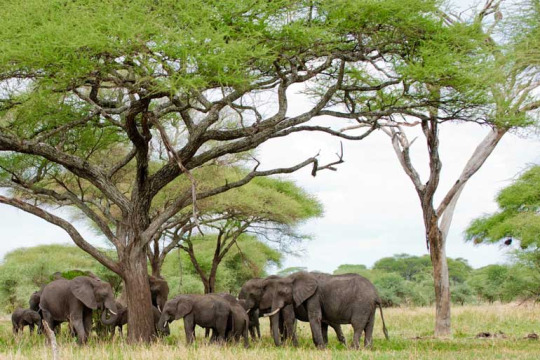
The Best Time To Visit Tanzania is during the long dry season, spanning from July to September. These months offer excellent weather conditions for various activities such as safaris, witnessing the Great Migration, and enjoying beach holidays in Zanzibar.
The Dry Season in Tanzania ensures clear skies, minimal rainfall, and comfortable temperatures, creating ideal conditions for outdoor adventures. However, it’s essential to note that these months coincide with peak travel season, resulting in higher rates and increased tourist traffic at popular destinations.
For travellers seeking a quieter Tanzania safari experience and lower rates, the short rainy season from the end of October to December can be an excellent alternative. During this period, the landscapes are lush and green following the rains, and wildlife sightings can still be rewarding. Although there may be occasional showers, they are typically brief and do not significantly impact travel plans.
In conclusion, whether you prefer the bustling atmosphere of the dry season or the quieter ambiance of the short rainy season, Tanzania Safari Tour offers unforgettable experiences year-round.
0 notes
Text
by Kylie Ora Lobell
Now, Klompas has come out with a book, “Stand-Up Nation: Israeli Resilience in the Wake of Disaster” (Wicked Son), which is a unique approach to Israel activism. Rather than sharing news about the war, this book highlights Israel’s altruism towards the world.
“Today, Israel is nicknamed the ‘Start-Up Nation,’ and it is celebrated for its booming economy and ingenious innovations,” she wrote in the book. “Less celebrated is the story of how Israel lifted up other nations as it lifted up itself — the story of Israel, a force for good in the world.”
“Today, Israel is nicknamed the ‘Start-Up Nation,’ and it is celebrated for its booming economy and ingenious innovations. Less celebrated is the story of how Israel lifted up other nations as it lifted up itself — the story of Israel, a force for good in the world.”

Klompas’ book outlines MASHAV’s work, such as when they built the first utility-scale solar field in East Africa, spearheaded clean water initiatives in Israel, Jordan, the West Bank and Gaza and provided meals to starving children in India.
“For a while, Israel became a global leader in supporting newly independent states. Precisely because it was small and poor, Israel had an advantage over larger, richer, and more established countries,” Klompas wrote. “It was a model and source of inspiration for newly emerging nations facing their own array of challenges.”
She saw this with her own eyes. After finishing up at the UN, she founded and led Project Inspire, an initiative to show Israel’s work in social, environmental and economic development in low-income nations. She ran tours in Uganda, Kenya, Guatemala, India and Nepal, showing participants how people in these countries utilize Israel’s teachings and technologies to tackle poverty and inequality.
When Klompas traveled, she saw Israel in “the most unlikely of places,” she wrote. “While trekking in East Africa and walking through a small craft market, I spotted a handmade beaded bracelet with the flag of Israel alongside bracelets with the flags of Kenya, Tanzania, and Uganda. In the remote hills of Nepal, I happened upon a group of children, and as I passed by they yelled to me: ‘Shalom! Namaste! Hello!’ In Uganda, I visited a remote island on Lake Victoria. Getting there required a windy bus ride, followed by a rickety boat ride, followed by another bumpy bus ride. When we finally reached Osanidde Village, an orphanage for children with HIV, we were greeted by teenagers who sang the Ugandan national anthem followed by ‘Hatikva.’”
“Stand-Up Nation” is a callback to what Israel really is, and what a massive impact the small Jewish State has had on the world – a much-needed reminder post-Oct. 7, when it is being bashed everywhere we look. Klompas believes that enough isn’t being done to communicate Israel’s nation-building initiatives.
“I think I’m the first one to write a book about it, if not one of the first,” she said. “I’m not sure that people who have been to Israel dozens of times are even familiar with MASHAV. How many people know this story about Israel as a developing country and founding an international development agency at the same time? It’s an untold story. And the more that I learn about it, the more it shocks me that people don’t know it.”
22 notes
·
View notes